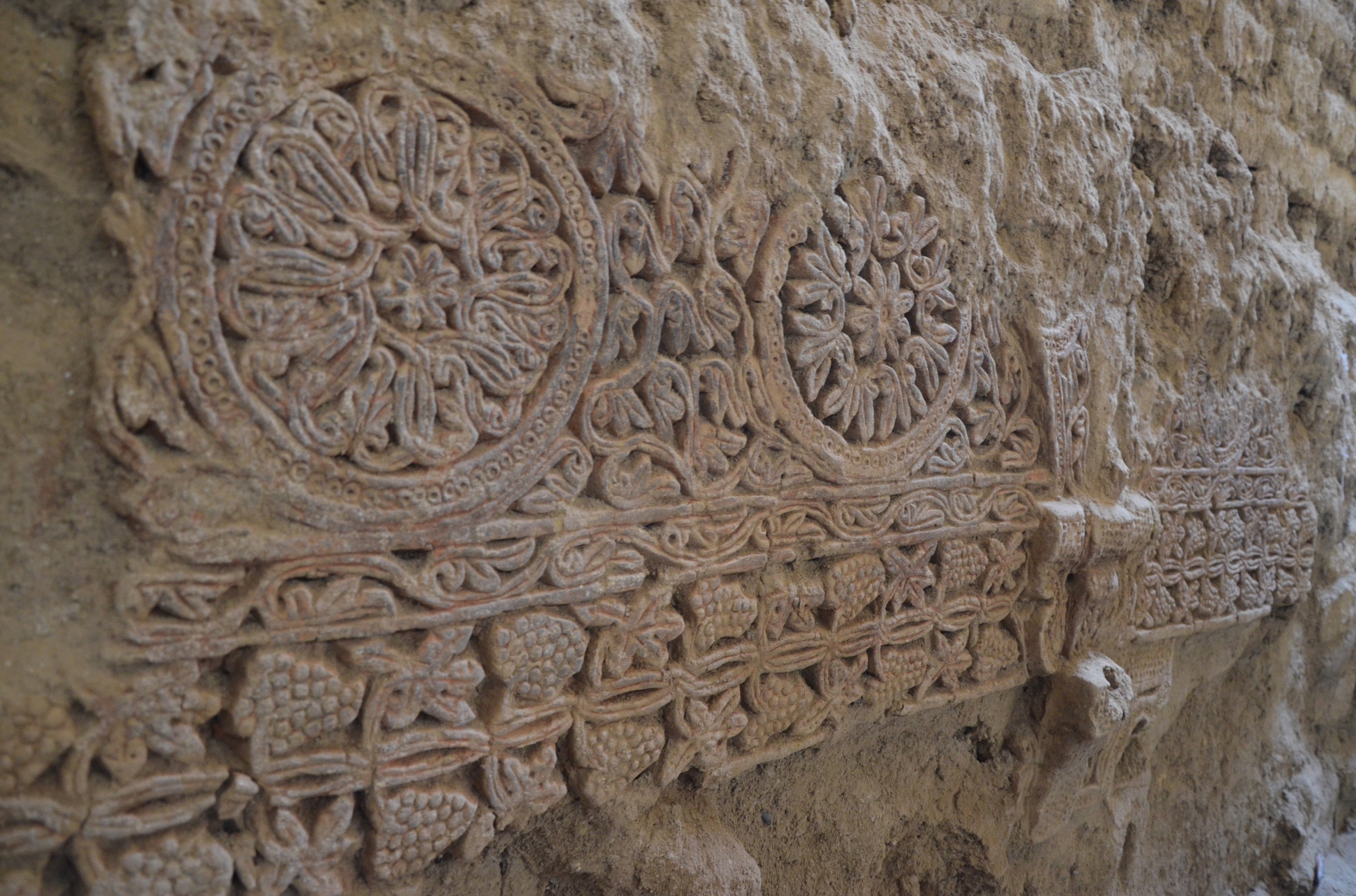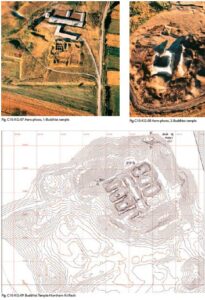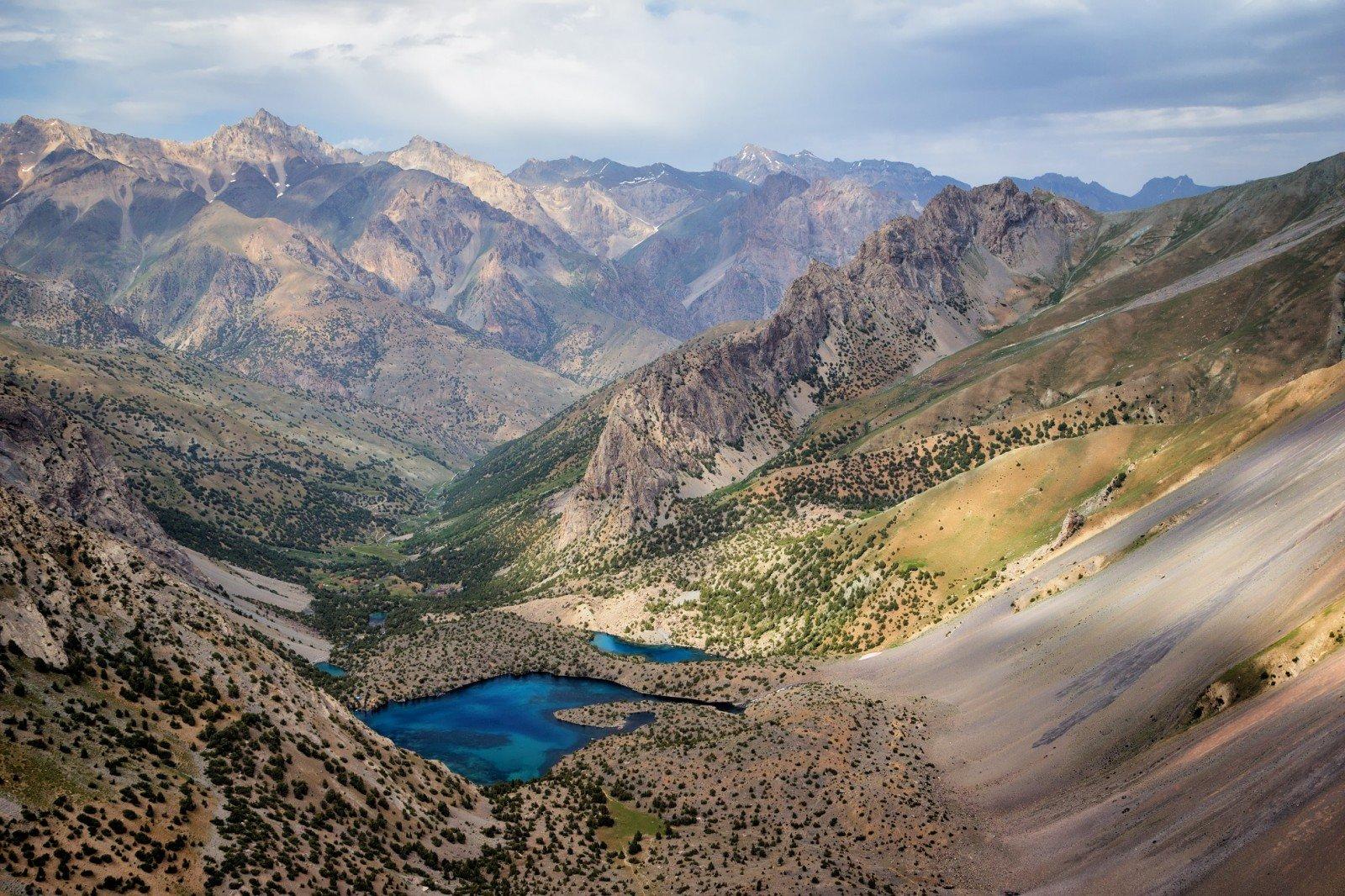ASTANA – Four historical and cultural sites in Kazakhstan, the Kyrgyz Republic, Tajikistan and Uzbekistan went through restoration and rehabilitation efforts in a large-scale regional project implemented by United Nations Educational, Scientific and Cultural Organization (UNESCO) regional office in Almaty with the financial support of the European Union (EU). The project’s results were presented on July 9 in Astana.

From L to R: Mukhayyo Makhmudova, the culture programme specialist from Uzbekistan, Amir Piric, director of the UNESCO regional office in Almaty, Kęstutis Jankauskas, EU Ambassador to Kazakhstan, and project coordinator Majer Massanov. Photo credit: The Astana Times
Titled Silk Roads Heritage Corridors in Central Asia – International Dimension of the European Year of Cultural Heritage, the project aimed at preserving and promoting the cultural heritage of the Silk Road and strengthening human and institutional potential in heritage management in Central Asian countries to enhance its tourism potential.
Rehabilitation works were carried out at the ancient Kulan settlement in Kazakhstan, the medieval city of Krasnaya Rechka in the Kyrgyz Republic, the Tajik National Park in Tajikistan and Itchan Kala at Khiva in Uzbekistan.
According to EU Ambassador to Kazakhstan, Kęstutis Jankauskas, the reviving of old Silk Roads serves as an additional layer of cooperation between EU and Central Asia, complementing ongoing efforts to develop the Trans-Caspian International Transport Route.
“We usually speak a lot about energy, about critical raw materials, agriculture, small and medium businesses but this is something that complements all of these relations,” said Jankauskas.
“Our enhanced partnership and cooperation agreement, which is the basis [of our cooperation], works in 29 different areas, and culture and tourism is one of them. So preservation of a cultural heritage creates the foundation for us. We truly believe in Europe that this diversity of cultural heritage, that we all as nations have, should be preserved. It should be the basis for our future development,” he added.
This is also excellent news for the entire international community of tourists, as the objects are now better represented and accessible.
“It is presented to the tourists – that’s what attracts us when we go to foreign countries. And I think this project on cultural preservation, enhancement of tourism, enhancement of small medium enterprises will help Kazakhstan and countries of Central Asia to work better together, to be better known in the world, in Europe, and to help boost our cooperation between this region and the European Union,” said Jankauskas.
Amir Piric, director of the UNESCO regional office in Almaty, highly evaluated the results of the project.
“Indeed, this was a very successful project. Rehabilitation works have been taking place on the territory of four outstanding heritage properties. Hundreds of heritage managers and specialists, tourism specialists, handcraft masters, artisans and bearers of traditional knowledge have raised their capacities as part of the project training. Dozens of educational and promotional heritage-related materials were prepared for a wide audience and a special target on our young generation,” said Piric.
Medieval city of Kulan, Kazakhstan
The project coordinator Majer Massanov has presented the details of the rehabilitation works.
The presentation started from an ancient settlement of Kulan in the Zhambyl Region, a major destination along the Silk Road, founded as early as the sixth century and inhabited until the 13th century.

The ornamental circles on Kulan’s medieval palace walls, featuring plant motifs, such as grapes. Photo credit: ec-sport.kz
“It is a big settlement, which is very difficult to explore in its entirety, it requires a lot of resources. Therefore our work was carried out in shakhristan (area inhabited by urban nobility) and the central citadel part, where intricately carved wall paintings on clay were discovered,” said Massanov.
He refers to ornamental circles on the medieval palace walls, featuring unique patterns with plant motifs, such as grapes, and complex geometric designs symbolizing life and solar energy.
In 2014, Kulan city was inscribed in the UNESCO World Heritage List as one of the 33 components of the Silk Roads: The Routes Network of Chang’an Tian Shan Corridor. In total, the nomination included 33 sites from China, Kazakhstan and the Kyrgyz Republic.
For a long time, the only Kazakh palace complex of such scale was neither protected nor preserved, lacking fencing and maintenance.
“Within our project, we did what remained to do, which was constructing a shelter over the settlement, creating tourist infrastructure, ensuring the right approach for tourists so that they do not destroy heritage sites, designing paths, designing information signs, in general, what we call sustainable tourism,” said Massanov.
Medieval city of Krasnaya Rechka, the Kyrgyz Republic

Aero-photo of two buddhist temples at Krasnaya Rechka. Photo credit: silkroads.org.cn
Another gem of the Silk Road is the ancient settlement of Krasnaya Rechka (Red River), identified as the ancient city of Nevaket, located in the Chuy Region of the Kyrgyz Republic. It is one of the three sites from the Kyrgyz Republic, along the 33 Silk Roads sites under the UNESCO heritage list.
The city of Nevaket has long been one of the most important urban settlements in the Chuy valley, showcasing a unique blend of Turkic, Indian, Sogdian, and Chinese cultural influences evident in both religious and civic architecture.
The restoration works were carried out on the second Buddhist Temple, which included extending its cover and installing a permanent fence on the territory.
The Buddhist temple complex, dating back to the sixth-eighth centuries CE, represents a rich cultural history and religious exchanges along the Silk Road.
Tajik National Park, Tajikistan
The natural heritage of Tajikistan, the Tajik National Park, included in the UNESCO World Heritage List under the Mountains of the Pamirs nomination, was another site that underwent rehabilitation.

Tajik National Park. Photo credit: Tajikistan National Park/visitworldheritage.com
Covering an expansive area of over two million hectares, Tajik National Park spans nearly the entire Pamir Mountains, the world’s third-highest mountain ecosystem after the Himalayas and Karakoram Mountains. The national park stands out as a very beautiful landscape with the Fedchenko glacier, the largest valley glacier of the Eurasian Continent.
“In the first stage, we assessed the tourism potential of the site and identified locations where we could install tourist infrastructure facilities, so-called tourist houses, which could be used by local tourists,” said Massanov.
The project is also undertaking important efforts to utilize locally sourced materials.
“For us, in general, it was important that these houses blend with the local landscape in terms of their design and that only local building materials, stones in this case, are used,” said Massanov.
Itchan city, Uzbekistan
Mukhayyo Makhmudova, the culture programme specialist from Uzbekistan, revealed the work carried out in Bogbonli mosque in Itchan Kala (Itchan city), which is the inner town of Khiva, located in the Khorezm Region. It was the last resting-place of caravans on the Silk Road before crossing the desert to Persia. In 1990, Itchan Kala was inscribed on the World Heritage List.

Busy market-street at Itchan Kala. Photo credit: Aibarshyn Akhmetkali/The Astana Times
With a history spanning over two millennia, the site features 51 ancient monumental structures, 250 dwellings, and notable architectural ensembles such as mosques, madrasas (Islamic educational institutions), and mausoleums.
“It is a very interesting, unique object, both from the historical point of view, and from the artistic and cultural point of views,” said Makhmudova of the Bogbonli mosque.
Although very few old monuments still remain, it is a well-preserved example of the Muslim architecture of Central Asia.
“At the site, the work was done on conservation and restoration of walls, floors, roofs, of the aivan part (a vaulted space enclosed on three sides and open on the fourth, typical of Central Asian mosque architecture), and so on. Work is also underway now, and we are now collaborating with an international expert. We will work on new technologies that help prevent salinity and moisture rise. And, of course, in the meantime, we want to train young specialists in these new technologies,” said Makhmudova.
The project will be completed in autumn.
Sustainable development
All initiatives within the project aimed at strengthening the role and contribution of culture to the sustainable development of the region.
Culture is an important component of sustainable development, according to Massanov.
“It happened that when the 2030 Sustainable Development Goals were adopted at the UN level, none of these SDGs were directly linked to culture, i.e. culture is a core component of many of them, but culture is not a separate SDG,” he said.
“Now UNESCO is working very actively to draw attention to this injustice. We believe that culture is a very important component of the sustainable development of any country, any community. And this project, among other things, helped us to bring this message to Central Asia,” he added.


